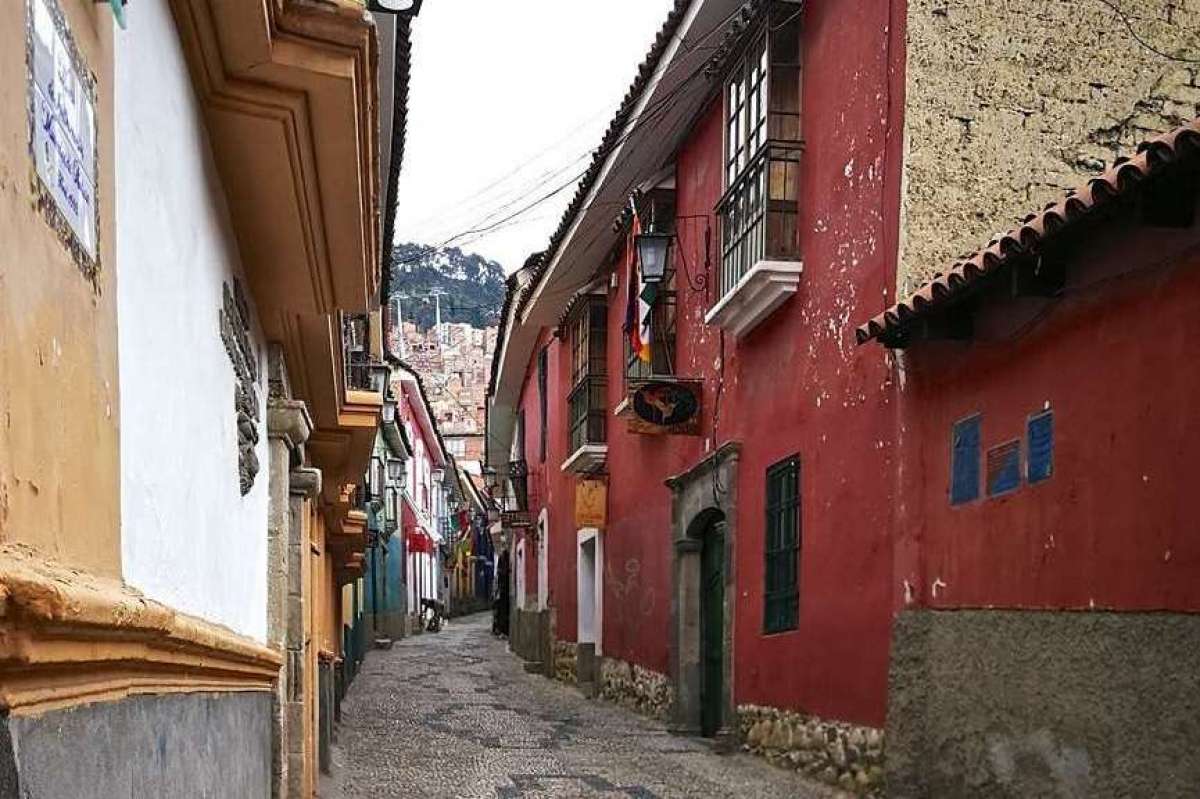

Jaén Street and its museums
This alley which preserves its colonial style was in the 16th century the market of the camelids. In the 19th century it was the home of some of the most important figures of the time, such as Apolinar Jaén, who, along with Pedro Domingo Murillo, were, among others, the sowers of libertarian ideas throughout Latin America. A green cross adorns one of its walls, which was designed to keep away the ghosts that disrupted the lives of the inhabitants, who ensured they could hear horse-drawn carriages circulating along the street at night. Today it houses the largest concentration of museums in the city of La Paz.
The Juan de Vargas Costumbrista Museum
The Costumbrista (Customs) Museum of La Paz was created with the intention of showing the history and traditions of the city's society. It is a pinacoteca that presents historical works related to the customs, habits and traditions of the Paceñas societies of the past as well as modern ones. There is a miniature sculpture of the foundation of La Paz, historical facts such as the tearing apart of Tupac Katari or the hanging of Pedro Domingo Murillo, as well as a soccer classic, and important figures from the 16th to 20th centuries represented in its windows.
Museum of Precious Metals.
This museum preserves goldsmith's and ceramics pieces from pre-Hispanic cultures. Among the gold pieces are tiaras, pectorals, pendants and ornaments that were used to dress the Inca emperors. The silver room displays ceremonial objects from the Aymara, Moyo, Wankarani, Chiripa, Tiwanaku, and Inca cultures. All these pieces belonged to private collections that were donated to the museum. The Bolivian Coastal Museum
The loss of the coastline during the war against Chile in the 19th century marked the economic, social and political future of the country. The museum is organized in such a way that the visitor becomes aware of a historical fact of importance for the country. It presents documents, the dress of Bolivian soldiers, their weapons and some symbols recovered during the epic battles on the Pacific coast and on the Atacama River. The architecture of the colonial house that this museum shares with the museum of precious metals and the costumbrista museum stands out.
The Casa de Murillo Museum
Right in the historic center of the city of La Paz, in an absolutely colonial context, Jaén street has been witness to the anti-colonialist conspiracies conceived in this house. It served as a hiding place for the revolutionary Pedro Domingo Murillo, precursor of the independence wave in Latin America. Today it has been turned into a museum and has been restored on the basis of the archives of the colonial police. It contains period furniture, paintings, silverware and some textiles from the region.



